You don’t know what to eat in Cordoba? Let us show you some specialities of the province and the best mouthwatering recipes!
Cordoba has a thousand-year-old tradition of cuisine and gastronomy. From the Romans time, through the Phoenicians, the Arabs and the Reconquest of the Catholic Monarchs, everyone has been contributing to improve the cuisine of Cordoba for centuries. The main ingredients are vegetables, used to prepare the salmorejo, and meat, typical in dishes such as flamenquines and rabo de toro.
We are showing you right away what are the best specialities of this province. Go ahead, read the recipes and cook these delicious dishes comfortably at home. From this blog directly to your palate!
Salmorejo
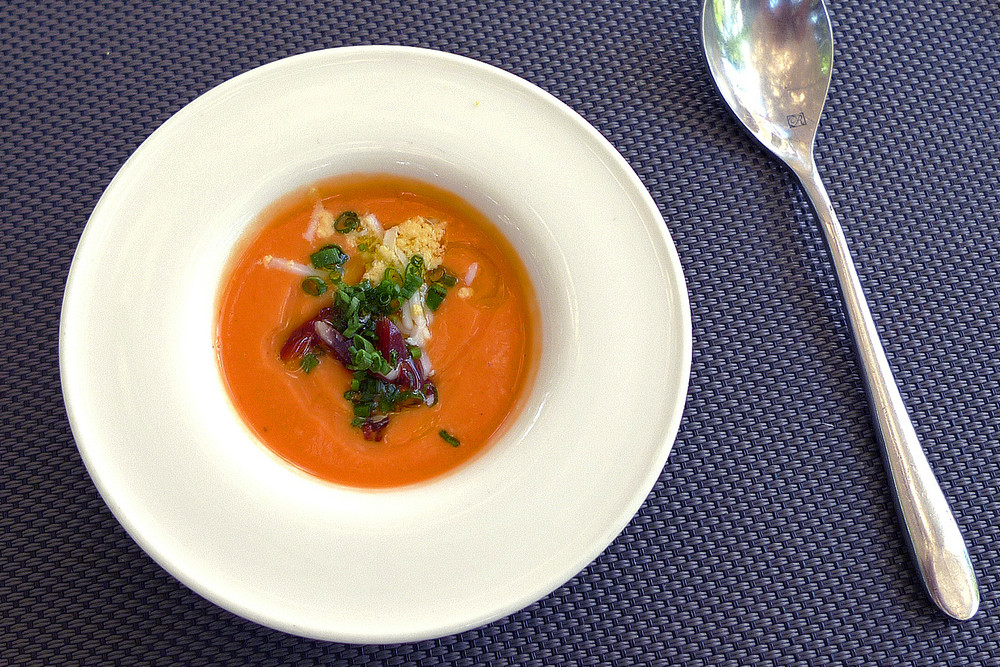
The salmorejo is a variety of the typical Andalusian dish gazpacho, a cold soup made of raw vegetables. Due to its texture, thicker and creamier than that of gazpacho, it is the ideal option to cool yourself down during the hot summer Andalusian days. In addition to the traditional ingredients, among which there are blended tomatoes, garlic, bread, lemon, vinegar, and olive oil, the salmorejo has more bread, crumbled hard-boiled eggs and strips of the traditional jamón serrano (cured ham) on top.
- 500 g of ripe tomatoes
- 100 g of hard bread (at least one day old)
- 100 ml olive oil
- 1 clove of garlic
- Water and ice
- Boil the water to peel the tomatoes while cutting a cross on the skin at the base of the tomatoes.
- As soon as it boils, add the tomatoes and let them cook for 30 seconds to 1 minute until the skin begins to separate from the tomatoes. Prepare a bowl of cold water and ice. Remove the tomatoes from the boiling water and put them in the cold water. Thanks to the sudden cooling, the skin will separate more easily, and the tomatoes will be easier to peel.
- Peel the tomatoes, then cut them into pieces and put them on the bread. Add a half teaspoon of salt.
- Cut the bread into small pieces.
- If the bread is particularly hard, let the tomatoes sink into it for 30 minutes, otherwise, skip to the following point.
- Peel the garlic and cut the centre. Cut the garlic into various pieces and add it gradually to the bread and tomatoes, as much as you prefer.
- Add the olive oil and mix everything in the blender, until it is perfectly creamy. Check the salt, and add it to taste if necessary.
- Put the salmorejo in the fridge to let it cool down and, before serving, add hard-boiled eggs and strips of cured ham as much as you like. Serve it cold.
Rabo de Toro
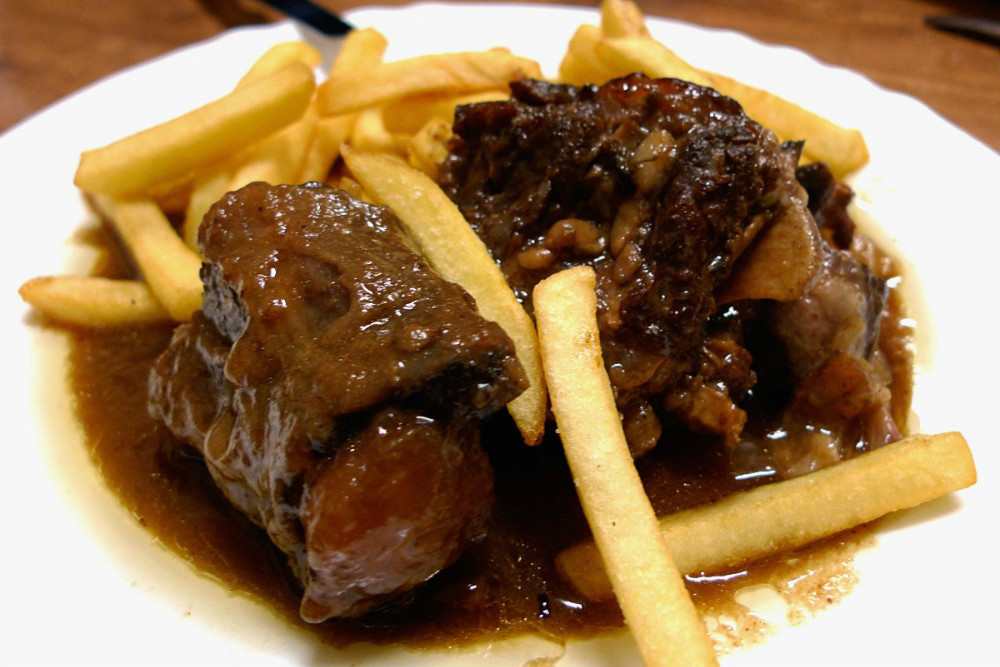
Cordoba, just like the majority of the cities in Andalucia, is very famous for the bullfighting tradition. Therefore, it is no surprise that one of the main dishes is the Rabo de Toro (the Spanish word for bull’s tail stew). Although the main ingredient may not always be the first bull’s tail, the way the meat is cooked provides an authentic experience of the senses. The recipe, as it is known nowadays, comes from the XIX century, when the meat used was that of the bulls killed in the bullfights. The rabo de toro is particularly delicious if eaten with potatoes or sauce, although it is also savoury when eaten alone.
- 2 kg of oxtail
- 2 cloves of garlic
- 1 onion
- 1 leek
- 2 ripe tomatoes
- 2 carrots
- 1 green pepper
- 2 bay leaves
- 10 black pepper berries
- 1 glass of red wine
- 2 glasses of meat stock
- 1 glass of water
- Olive oil
- Flour
- Salt
- Pressure cooker
- Season the meat, by putting it into the flour and passing it into the pre-warmed olive oil until golden. Afterwards, pull it out and conserve it.
- Chop the garlic, the onion, the leek, the carrots, the pepper and the tomatoes into pieces of more or less the same size, add salt and cook everything in the same pan where you cooked the meat, until soft.
- Once they are cooked, add the meat, the meat stock, the water and the wine.
- Let it boil and add the bay leaves and the black pepper berries, then close the pressure cooker and bring it to the point of maximum pressure.
- Lower the heat and let it cook for one hour.
- Turn off the heat, let the pressure cooker cool down and open when the steam has gone.
- Serve the now extremely tender meat with the seasoning you prefer.
Flamenquín
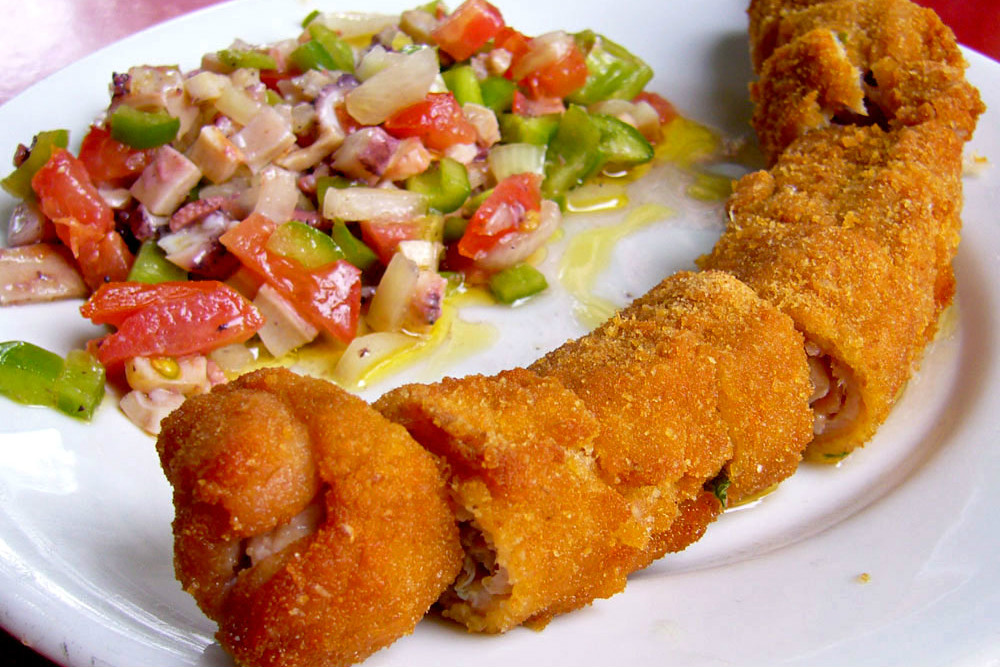
This dish is a tradition of Cordoba, where it was invented hundreds of years ago. Everyone in Andalucia and Spain knows and loves the tasty flamenquín. It consists of cured ham and pork loin wrapped in breadcrumbs and fried. There exist countless recipes about how to prepare flamenquines. Here we show you one, but everyone can modify it as they prefer. The flamenquines are usually accompanied by lettuce, mayonnaise and/or potatoes. The flamenquín owes its name to the Flemish troops that accompanied the emperor Charles V to Spain since the golden colour of this dish reminds of the colour of their hair.
- 12 pork loin fillets
- 12 slices of Serrano ham.
- 12 slices of cheese. Traditionally it does not contain cheese but you can give it a touch for the cheese lovers. Try gouda
- 2 egg
- Garlic
- Parsley
- Salt and pepper
- Flour
- Breadcrumbs
- Olive oil
- If the fillets are not very thin, flatten them with a kitchen mallet to make them flat and soft.
- Cover each fillet with a slice of Serrano ham.
- If you are going to put cheese on them, put now the slice on top.
- Roll it all up, leaving the ham and cheese inside. Tighten it well so that it doesn’t fall apart later.
- Dredge them in flour, then in the beaten eggs and coat them with breadcrumbs.
- Heat the olive oil in a frying pan, and put the flamenquines in it. Turn them until golden brown.
- Remove from the frying pan and drain on kitchen paper to remove excess oil.
- Serve hot.
Pastel cordobés
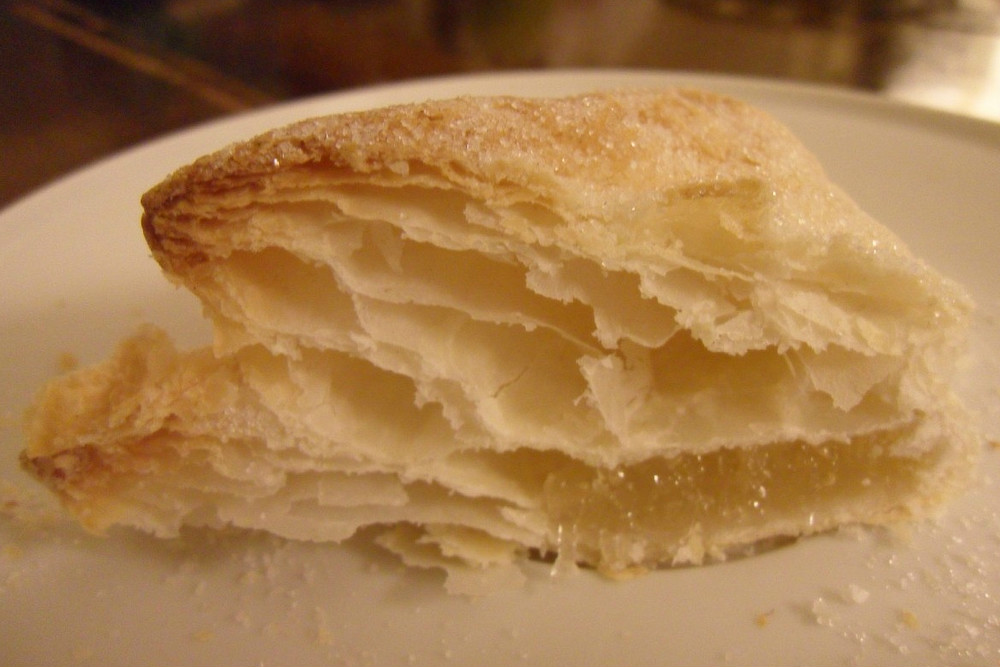
The typical dessert of Cordoba is a puff pastry sweet filled with candied fruits (Cabell d’ángel, Angel’s hair, the Spanish transparent threaded jam made from Siam pumpkin), sprinkled with almonds, cinnamon and sugar, and usually accompanied by straw wine. In Cordoba, people celebrate the Pastel Cordobés Day on November 17. It is then when all those that attend the celebration are given a free portion of the sweet. A tip: some of the most delicious pasteles cordobeses are those made in the Santa Isabel de los Ángeles monastery, in Cordoba.
- 2 sheets of puff pastry (500 gr)
- 350 gr of Angel’s hair
- Sugar
- Ground cinnamon
- Put one sheet of puff pastry on a baking parchment and stretch it until it has a round shape.
- Distribute the angel’s hair all over the sheet, leaving aside the last two centimetres from the edge.
- Put the second sheet of puff pastry on top of the first one, and seal the edges.
- Prick the top with a fork and spread sugar all over it.
- Bake it in a preheated oven at 170° for 40 minutes.
- Before serving, let it temper and spread the top with sugar and ground cinnamon.
We bet you are starting feeling hungry, aren’t you? All hands on deck and prepare these typical dishes of Cordoba!
Have you tried any of these specialities? Have you cooked them by yourself? Leave a comment, and tell us which one is your favourite recipes!

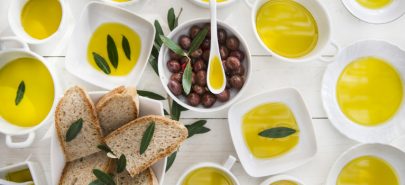





Saved as a favorite, I love your web site!
Thank you Rosaline! 😀
Anyone would love to try those recipes, specially the Flamenquín and Rabo de Toro. These two looks delicious and so mouth-watering. Cordoba is a must visit because of these foods.
We agree, Frank! The Flamenquin is simply delicious 😉 Have you already tried to cook it at home?